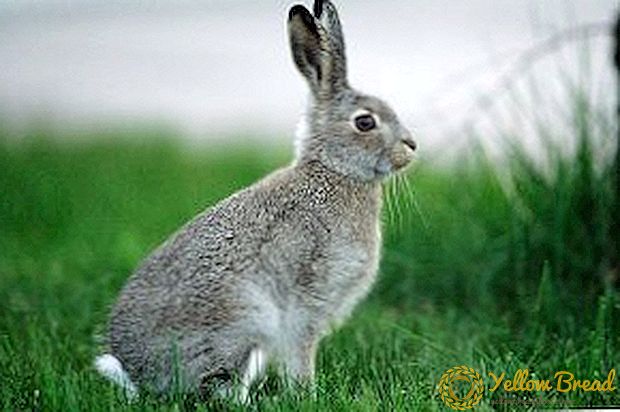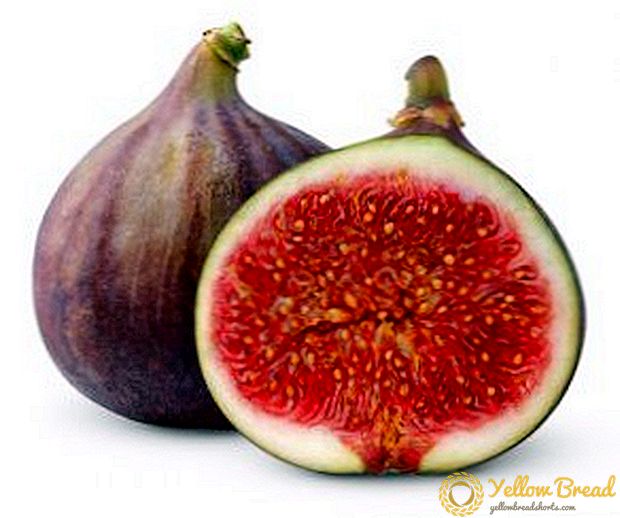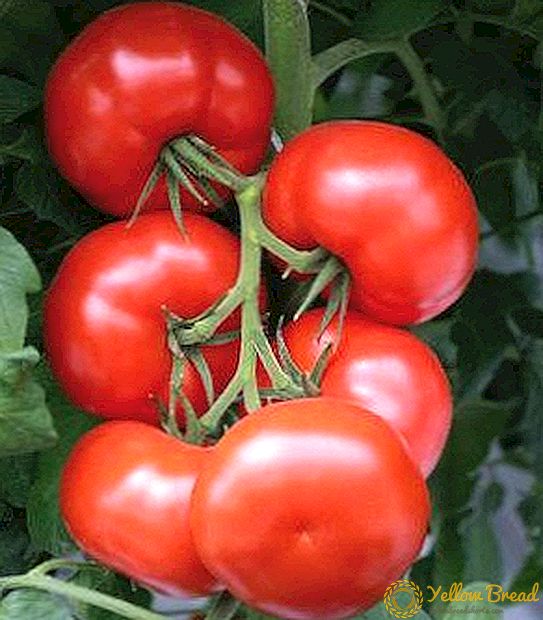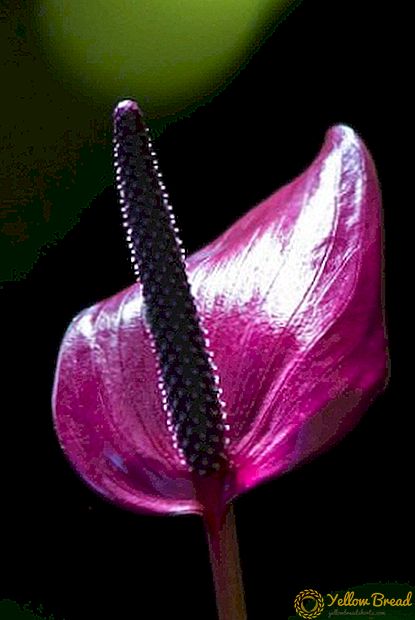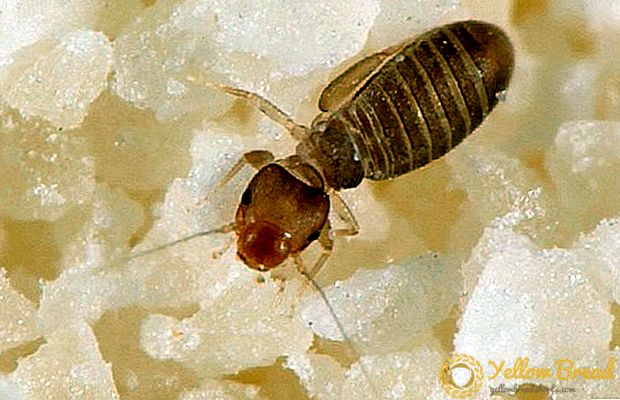 "Thistle" - a fairly well-known name, which is probably known even to people unrelated to working with herbs. Many take it as weed and destroy it when it is distributed on its plot, but some of its species can be very useful.
"Thistle" - a fairly well-known name, which is probably known even to people unrelated to working with herbs. Many take it as weed and destroy it when it is distributed on its plot, but some of its species can be very useful.
For example, curly thistle has an antiseptic and wound-healing effect, which in combination with other virtues makes it an excellent component of the "national" first-aid kit.
Let's take a closer look at this plant and examine in detail its healing properties.
- Description and photo
- Spread
- Medicinal properties
- Contraindications
- How to deal with a plant
Description and photo
From time immemorial, people have given plants names that differ significantly from their scientific names. Therefore, if you hear about "bodhya kenogolovomov", "basurmanskoy grass", "grandfather", "drapach", "tatarnik" or "Cherthogon", you know - this is all there is a thistle, and more specifically, a biennial herb belonging to the Compositae family.  Often it grows up to two meters, although more often there are specimens not higher than 60 cm. The stalk of the curly thistle is powerful and upright, branched at the top.Both the trunk and the branches are narrow-winged and hilly, with notched-toothed wings studded at the edges.
Often it grows up to two meters, although more often there are specimens not higher than 60 cm. The stalk of the curly thistle is powerful and upright, branched at the top.Both the trunk and the branches are narrow-winged and hilly, with notched-toothed wings studded at the edges.
The seed length is 3-4 mm, they are slightly compressed from the sides and differ in thin grooves running along them, as well as transverse wrinkles. Flowering plants are observed from June to September, and active fruiting begins in mid-summer and lasts until the beginning of autumn. 
The baskets crowded in 2-5 pieces are of the sedentary type, concentrated on the ends of the stems or placed on short pedicels and placed in the final brushes with a small amount of flowers in them. The leaflets in the basket are slightly deflected to the side, they are multi-row and linear-styloid, and in the upper part they form a short sharp thorn.

Spread
Curled Thistle It is found in different parts of the world, but in the wild it is most common in central and eastern parts of Asia, Europe, and India. At one time, it was introduced to Canada and the USA, where it is successfully growing today. The plant selects plots at forest edges, in ravines, on the banks of rivers and streams, and is often found on meadows, fields, near roads or houses.
Medicinal properties
For medicinal purposes, it is possible to use both the above-ground (leaves and stems) and the underground part of the thistle. About 0.5% of terpenoids and the same number of alkaloids are present in the grass, and up to 30 mg of ascorbic acid was also found in the leaves. The root system of the plant boasts the presence of inulin polysaccharide, and the seeds contain up to 30% of semi-drying fatty oil.
For the preparation of therapeutic formulations, the collection of the aerial parts is carried out in July and in August, that is, during the period of active flowering of the thistle, while harvesting the roots is already done with the arrival of autumn. 
Herbal decoction used to stop bleeding, as well as in the treatment of nervous disorders, scrofula and gonorrhea. In many countries of the West and East, a decoction prepared from the root system of the thistle is successfully used for insomnia and epilepsy.
To cope with the manifestations of bronchial asthma help crushed leaves. They need only to set fire and inhale the smoke, or twist it into a roll-up cigarette and smoke it.
Purulent formations on the body and bleeding ulcers are often washed. sap plants or applied to wounds gruel fresh chopped herbs. It is rumored that the prepared decoction is excellent for treating tetanus and helps to alleviate the condition of a person if he has malignant tumors.  In traditional medicine, preparations from this useful weed are often prescribed for diseases of the joints, tuberculosis, "female" diseases, and also for menstrual disorders.It can be useful in the treatment of toxic lesions of the liver, jaundice and hepatitis, as well as help to remove accumulated bile from the body.
In traditional medicine, preparations from this useful weed are often prescribed for diseases of the joints, tuberculosis, "female" diseases, and also for menstrual disorders.It can be useful in the treatment of toxic lesions of the liver, jaundice and hepatitis, as well as help to remove accumulated bile from the body.
Here are some examples of creating useful decoctions of curled thistle:
Recipe 1.
For one large (tablespoon) spoon of crushed inflorescences and leaves of the plant, take 250 ml of water and, after mixing, place them on a small fire, boiling for five minutes. As soon as the broth cools down, it is filtered and consumed one large spoon three to four times a day. 
Recipe 2.
On a small (tea) spoon of shredded roots, you need to take 250 ml of water and boil the mixture over low heat for 10 minutes. After cooling, the tool is also filtered and consumed one large spoon three times a day.
Of course, these are not the only possible recipes, and depending on the nature or stage of this or that ailment, others can be found.
Contraindications
Despite the whole set of positive properties of curled thistle, it is not for everyone.The main contraindications are hypertension and individual intolerance to the components of the plant.
However, even completely healthy people, and even more so for people suffering from nervous disorders, should strictly follow the proportions indicated in the recipes, because when they exceed the dosage possible negative effects on the nervous system.

How to deal with a plant
As we mentioned at the very beginning, not all people know about the healing properties of curly thistle. When, because of its fertility, the plant quickly occupies more and more new plots of land, suppressing cultural plants with its presence, it is logical that they want to get rid of it.
On private plots and gardens, it is better to remove the grass manually, but in heavily neglected areas, it will have to be mowed, following the procedure before flowering begins.Before sowing cultivated plants and immediately after harvesting, it is useful to process the place of their growth with special chemical compounds used to remove other weeds (preparations of "Hurricane", "Glialka", "Glifogan" and "Tornado" have proven themselves well).
You do not need to breed a curly thistle on your site - just walk through the fields and other surrounding natural territories, because, most likely, you will find it not far from home.

